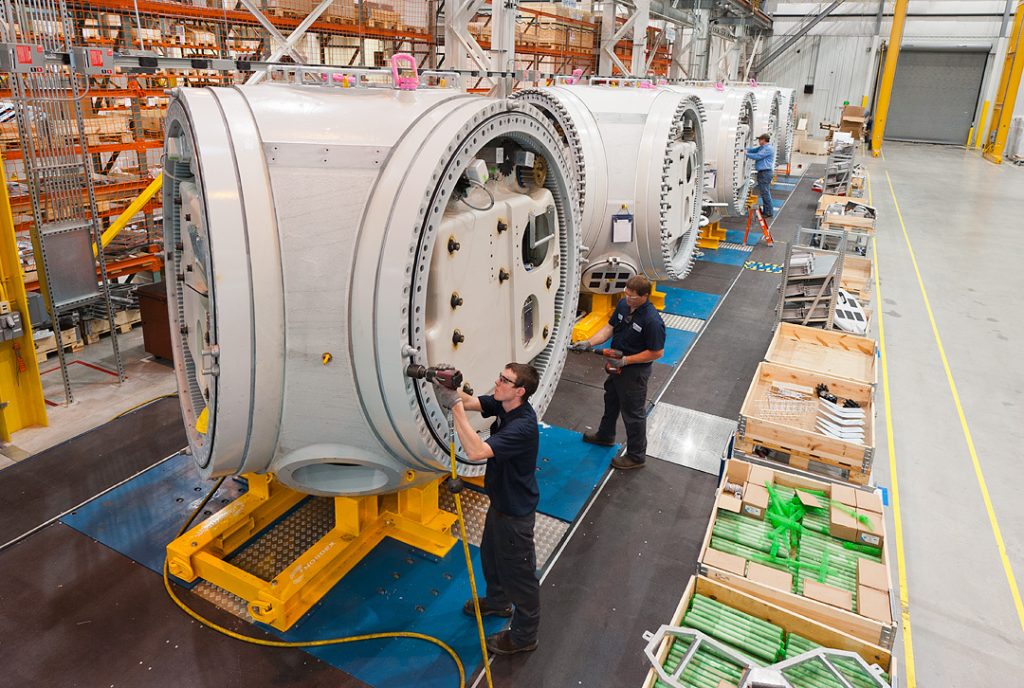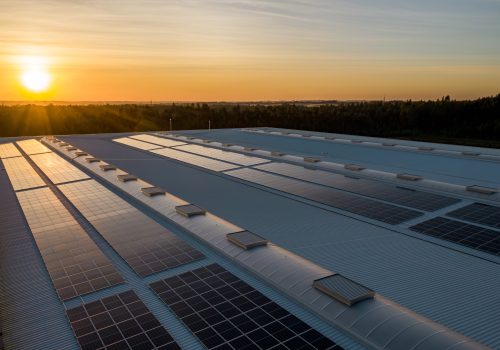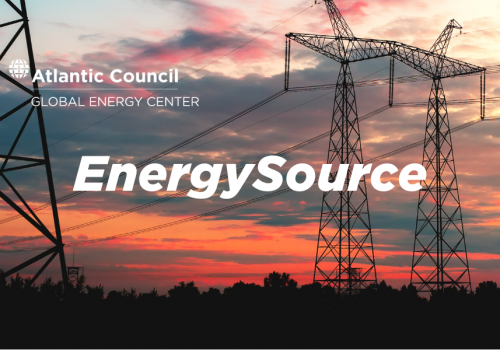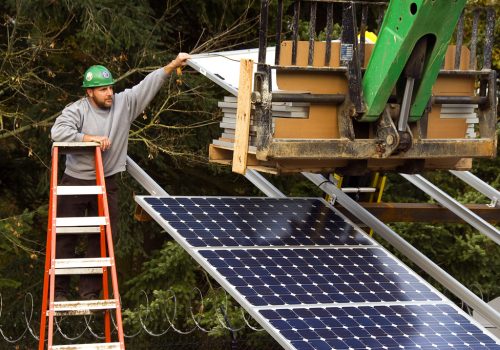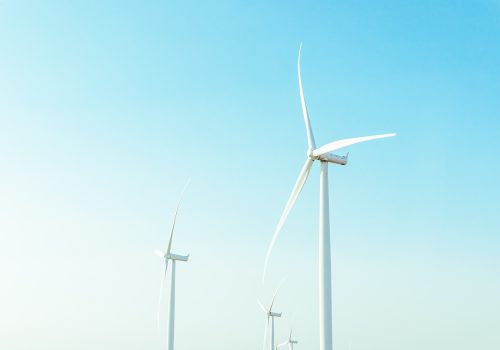US offshore wind is becoming an increasingly fraught political issue, demonstrated by recent party-line opposition to offshore wind projects in New Jersey and Maryland.
One year after the Inflation Reduction Act (IRA), political polarization threatens US climate targets and clean energy jobs, and offshore wind has become a major battleground.
Reducing political polarization over offshore wind is crucial for deploying this key energy source. A strategy linking offshore wind to complementary industries, such as steelmaking and the US military and civilian naval fleets, may help de-politicize the technology. The most important way for the offshore wind industry to ensure bipartisan buy-in, however, is to reduce consumer costs.
The IRA is not as polarizing as it appears
The IRA’s passage highlighted the highly partisan nature of US politics. Every Democrat in Congress voted for it, and every Republican against.
Regardless, elements of the IRA are popular among both parties’ voters. Recent polling found 65 percent of Americans support its tax credits for installing solar panels and 54 percent approve of the IRA’s expanded solar and wind manufacturing tax credits. Majorities also endorse its consumer tax credits for heat pumps and electric vehicles.
Although most US voters like the IRA’s central provisions, only 39 percent approve of the legislation overall.
Currently, fiscal support for many clean energy technologies is not highly polarized. While Democrats overwhelmingly favor tax credits for manufacturing solar panels and wind turbines, a 41 percent plurality of Republicans also back the measure.
Offshore wind is uniquely politicized
Offshore wind is an exception. Other post-IRA polling shows public perception of offshore wind is splitting along partisan lines.
A recent survey of New Jersey residents found 53 percent of Democrats support building offshore wind in the state, while 62 percent of Republicans prefer stopping their development. The poll also found that respondents were swayed by the claim that offshore wind projects could increase the number of whale deaths, for which there is no evidence.
At the local level, offshore wind projects in two cities—both named Ocean City—in New Jersey and Maryland are experiencing significant pushback. The New Jersey offshore wind project is facing blowback from the local tourism industry and out-of-state interest groups, while the Maryland project is also facing well-organized opposition, including from the town’s official website. While these entities cannot necessarily thwart offshore wind projects, they can slow them down considerably, undermining projects’ viability.
How to reduce polarization on offshore wind
The political polarization of offshore wind was not inevitable. The majority of new clean energy projects and jobs are being created in Republican-majority constituencies. Red states like Texas, Iowa, and Oklahoma are national leaders in onshore wind generation.
Offshore wind also holds significant job-creating potential in GOP-leaning rural areas, both along the coast and further inland.
For instance, US steelmaker Nucor’s new mill in Brandenburg, Kentucky employs 400 workers to supply low-carbon plates to the offshore wind industry. The local county sent 72 percent of its votes to the Republican candidate in the 2020 presidential election.
Bolstering the US steel industry–and steel-consuming industries such as offshore wind and shipbuilding–is a bipartisan priority where the two parties could work together.
Since steel accounts for 90 percent of the materials used in an offshore wind farm, reducing steel costs is vital for the efficient deployment of the technology.
Controlling steel costs is a priority for both decarbonization and for national security. Reducing steel costs could improve the prospects for US military shipbuilding, enabling the US Navy to better compete with its peer adversary, the People’s Liberation Army (Navy) in building new surface and subsurface platforms.
Accordingly, both Democrats and Republicans may have a shared interest in bolstering the US steel industry by expanding domestic production and importing more from allied and friendly economies.
Finally, both parties share an interest in lowering interest rates and inflation. One way to do so is to reduce the budget deficit and aggregate spending by ensuring that foreign nations pay for the emissions associated with their exports to the United States.
The bipartisan duo of Senators Kevin Cramer of North Dakota and Chris Coons of Delaware have proposed the Providing Reliable, Objective, Verifiable Emissions Intensity and Transparency (PROVE IT) Act, which bill seeks to measure the emissions intensity of industrial materials produced in the United States with the aim of ultimately imposing tariffs on carbon-intensive tariffs via a carbon border levy. Such a tax could help slash the deficit and thereby ease interest rates, which would—all else being equal—improve the profitability of capital-intensive renewables projects.
The politicization of offshore wind is neither desirable nor inevitable. Ultimately driving down offshore wind costs is the surest way to make the technology more acceptable across the political spectrum.
While tackling abstract ideas such as climate change is not an attractive proposition for large segments of the US public, everybody likes lower electricity bills.
Joseph Webster is a senior fellow at the Atlantic Council Global Energy Center. This article reflects his own personal opinion.
Meet the author
Related content
Learn more about the Global Energy Center

The Global Energy Center develops and promotes pragmatic and nonpartisan policy solutions designed to advance global energy security, enhance economic opportunity, and accelerate pathways to net-zero emissions.
Image: Nordex USA wind-turbine nacelle manufacturing plant, Jonesboro, Arkansas, courtesy of the US Department of State (https://openverse.org/image/db53ed0d-735d-4a40-a393-944419b030aa)
